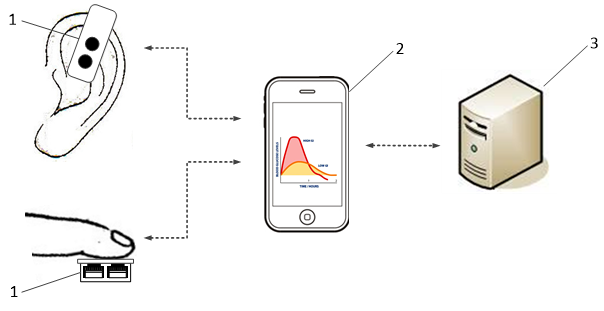

Opportunity
According to WHO, about 422 million people worldwide are suffering from diabetes and the number is increasing every year. The economic burden, estimated to be about US$376 billion annually and reaching US$ 490 billion in 2030. Currently, the most effective way to control diabetes is to control the glucose concentration by accurately monitoring it and adjusting quantity and intake time of medication accordingly. Existing glucose concentration systems has the limitations that they tend to be invasive (e.g. by puncturing the finger tip), bulky (i.e. generally unsuitable for portable, point-of-care applications), and expensive.
A continuous, non-invasive system of measurement of glucose level is proposed here. This system uses machine learning to correlate glucose concentration based on NADH (nicotinamide adenine dinucleotide+hydrohen) Fluorescence Decay using a lensless system. It enables a wearable device to be developed for self-monitoring which allows for more vigorous blood and comfort.
Technology
The invention consists of 3 parts. Firstly, a method based on machine learning for modeling the relationship between glucose and NADH fluorescence decay. Secondly, three embodiments of an apparatus for lensless and integrated time-correlated single photon counting (TCSPC) measurement, glucose estimation and the associated database management. Thirdly, a system, operation procedures, and use cases for continuous and non-invasive glucose measurement. The NADH fluorescence decay from the user is acquired from finger tip, ear loop or other body area using a small high frequency pulse light emitter and a photon avalanche detector. The result is then analysed and correlated using AI to indicate continuously the glucose level.
Advantages
- The fluorescence lifetime technology used depends on chemical structure of the target molecular instead of intensity like other non-invasive detection devices
- The photon counting module can work under high frequency (over 1MHz), providing rapid and reliable results based on massive data statistics
- The user only needs to collect one kind of bio-signal, the NADH fluorescence decay, through wearable device in a non-invasive way. Thus minimizing invasiveness, saving time and cost, and optimizing patient comfort.
- The proposed technology provides an easy, low-cost, real-time, reliable and comfortable solution for daily monitoring of glucose.
Applications
- Hospital to provide device to patients for self-monitoring at home, thus reducing costly reliance at the hospital.
- Family doctor can provide device to patients for self-monitoring at home. Receiving, analyzing patient data can be offered as a charged service.
- Patients can buy the device for self-monitoring to more accurately tuning his/her condition to medications need.




